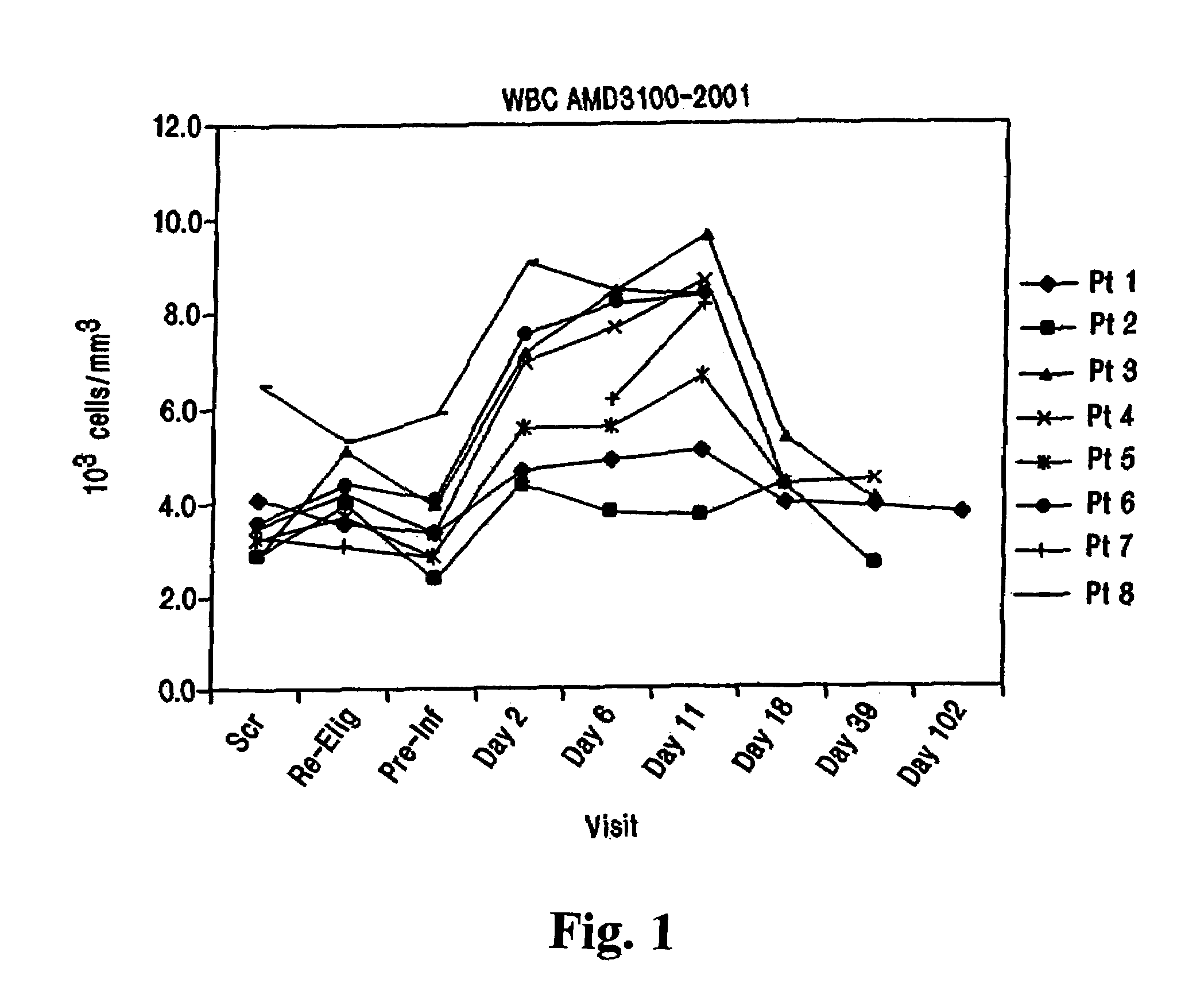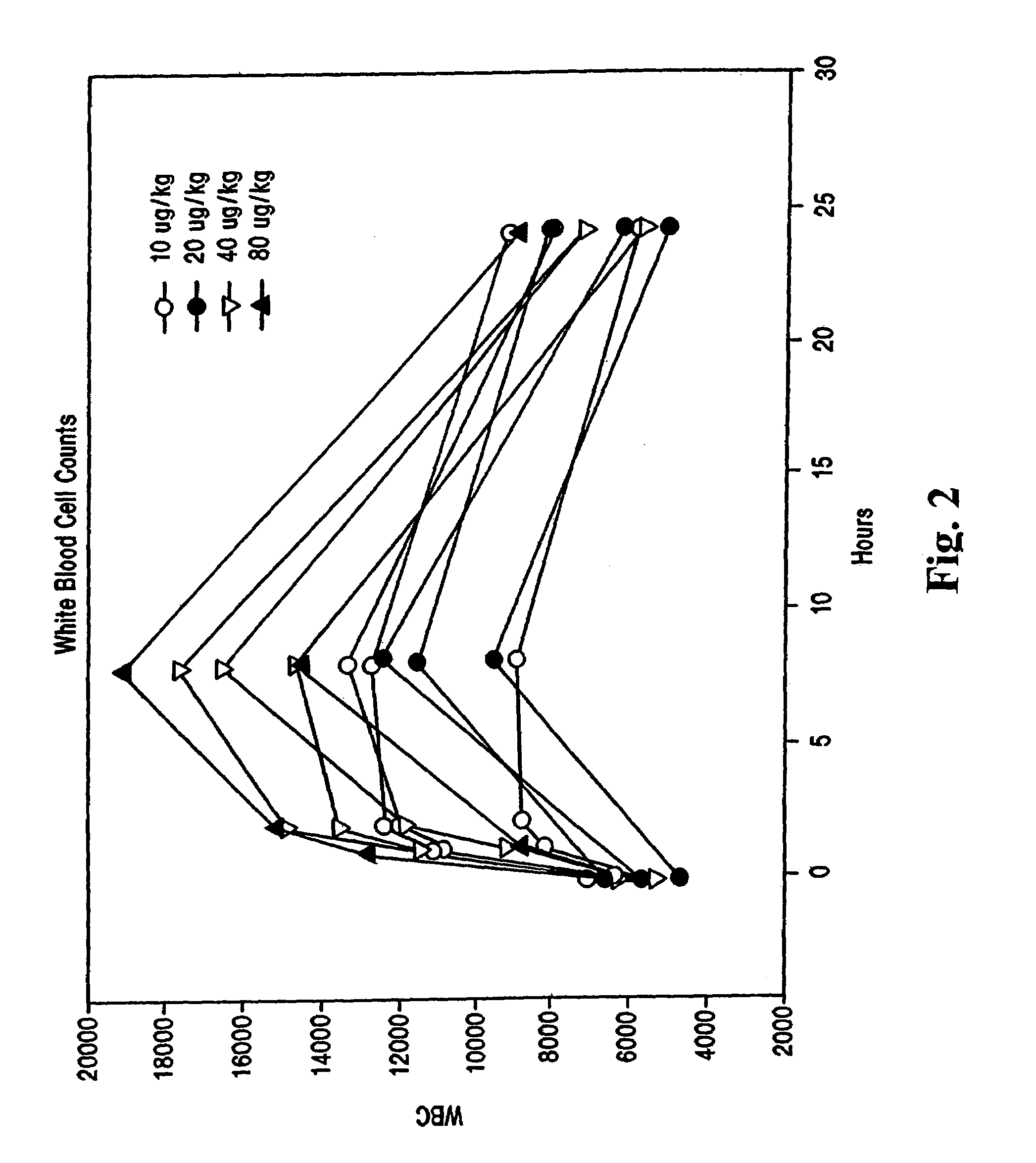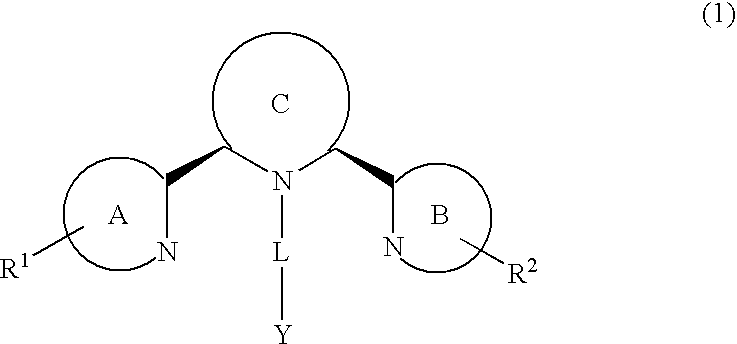Chemokine receptor binding heterocyclic compounds with enhanced efficacy
a heterocyclic compound and chemokine receptor technology, applied in the field of new compounds and pharmaceutical compositions, can solve the problems of hematopoietic and cardiogenesis, need to add, lethal deficiencies in vascular development, etc., and achieve the effect of inhibiting hiv replication and destroying the effectiveness of the compound
- Summary
- Abstract
- Description
- Claims
- Application Information
AI Technical Summary
Benefits of technology
Problems solved by technology
Method used
Image
Examples
example 1
[0196]
COMPOUND 1: 4-(3,3″-Dimethyl-3′,4′,5′,6′-tetrahydro-2′H-cis-[2,2′;6′,2″]terpyridin-1′-yl-butylamine
[0197]To a cold (−78° C.) solution of N,N,N′,N′-tetramethylethylenediamine (TMEDA) (4.06 mL, 26.9 mmol) in dry THF (50 mL) under an atmosphere of Ar was added n-BuLi (2.5 M in hexanes, 10.7 mL, 26.9 mmol). 2-Bromo-3-methylpyridine (3.0 mL, 26.9 mmol) was added dropwise and the temperature was raised to −55° C. for 30 minutes. The reaction mixture turned red. It was then cooled to −78° C. and dimethyl glutarate (1.65 mL, 11.2 mmol) was added. The reaction mixture was stirred at −78° C. for 1 h. Water (200 mL) was added and the mixture was extracted with CH2Cl2 (3 times 200 mL). The combined organic extracts were washed with brine (200 mL), were dried over mgSO4, filtered and concentrated. The crude material was purified by flash column chromatography on silica gel (1:1 EtOAc:hexanes) to provide 1.5 g (48%) of 1,5-bis-(3-methyl-pyridin-2-yl)-pentane-1,5-dione as a white solid. 1H N...
example 2
[0204]
COMPOUND 2: [3-Aminomethyl-4-meso-(3,3″-dimethyl-3′,4′,5′,6′-tetrahydro-2′H-cis-[2,2′;6′,2″]terpyridin-1′-ylmethyl)-phenyl]-methanol
[0205]To a solution of 3-methylpyridinecarbaldehyde (43.27 g, 357 mmol) in MeOH (179 mL) at 0° C. was added NH4OAc (151.14 g, 197 mmol). 1,3-Acetonedicarboxylic acid (26.10 g, 178.6 mmol) was then slowly added to the reaction over a period of 15 minutes. After vigorous bubbling subsided, the solution was allowed to stir for 1 hour while warming to room temperature. The solvent was then removed under reduced pressure and CH2Cl2 (500 mL) was added. The solution was washed with saturated aqueous Na2CO3 (350 mL) and separated. The aqueous phase was then extracted with CH2Cl2 (2×400 mL) and the combined organic components dried (Na2SO4) and concentrated under reduced pressure to give, after flash chromatography through a plug of silica gel (2:0.5:97.5 MeOH / NH4OH / CH2Cl2), meso-3,3″-Dimethyl-2′,3′,5′,6′-tetrahydro-1′H-cis-[2,2′;6′,2 ″]terpyridin-4′-one a...
example 3
[0214]
COMPOUND 3: The (1-[4-((2′S,6′R)-3,3 ″-dimethyl-3′,4′,5′,6′-tetrahydro-2′H-[2,2′;6′,2″]terpyridin-1′-yl)-butyl]-3-(1H-imidazol-2-yl)-urea
[0215]A mixture of 2-aminoimidazole sulfate (0.100 g, 0.757 mmol), 1,1′-carbonyldiimidazole (0.129 g, 0.796 mmol) and DIPEA (0.293 g, 2.27 mmol) in CH2Cl2 (10 mL) was stirred for 5 h, and then the solvent was removed. The residue was dissolved in DMF (6 mL), and 4-((2′S,6′R)-3,3″-dimethyl-3′,4′,5′,6′-tetrahydro-2′H-[2,2′;6′,2″]terpyridin-1′-yl)-butylamine (0.130 g, 0.384 mmol) and DIPEA (0.293 g, 2.27 mmol) were added. The mixture was heated at 75° C. for 16 h, and then cooled to room temperature. Saturated aqueous NaHCO3 (20 mL) was added, and the mixture was extracted with CH2Cl2 (3×30 mL). The extracts were combined and dried over Na2SO4. After filtration the solvent was removed by evaporation under vacuum, and the residue was purified by flash chromatography on a silica gel column (100:5:2 CH2Cl2 / CH3OH / NH4OH), affording a pale yellow soli...
PUM
| Property | Measurement | Unit |
|---|---|---|
| body weight | aaaaa | aaaaa |
| body weight | aaaaa | aaaaa |
| bath temperature | aaaaa | aaaaa |
Abstract
Description
Claims
Application Information
 Login to View More
Login to View More - R&D
- Intellectual Property
- Life Sciences
- Materials
- Tech Scout
- Unparalleled Data Quality
- Higher Quality Content
- 60% Fewer Hallucinations
Browse by: Latest US Patents, China's latest patents, Technical Efficacy Thesaurus, Application Domain, Technology Topic, Popular Technical Reports.
© 2025 PatSnap. All rights reserved.Legal|Privacy policy|Modern Slavery Act Transparency Statement|Sitemap|About US| Contact US: help@patsnap.com



